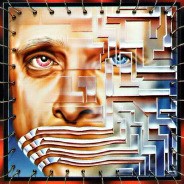Подчеркните сказуемое в страдательном залоге. communication technologies are generally categorized as asynchronous or synchronous. asynchronous activities use technologies such as blogs, wikis, and discussion boards. the idea here is that participants may engage in the exchange of ideas or information without the dependency of other participants involvement at the same time. electronic mail (email) is also asynchronous, that mail can be sent or received without having both the participants' involvement at the same time. synchronous activities involve the exchange of ideas and information with one or more participants during the same period of time. a face to face discussion is an example of synchronous communications. synchronous activities occur with all participants joining in at once, as with an online chat session or a virtual classroom or meeting. virtual classrooms and meetings can often use a mix of communication technologies. the term elearning 2.0 has been used to refer to the user of social software such as blogs and wikis. this approach has been particularly evangelized by stephen downes who runs the very popular daily blog and newsletter. in many models, the writing community and the communication channels relate with the e-learning and the m-learning communities. both the communities provide a general overview of the basic learning models and the activities required for the participants to join the learning sessions across the virtual classroom or even across standard classrooms enabled by technology. many active ties essential for the learners in these environments require frequent chat sessions in the form of virtual classrooms and/or blog meetings. the various blogs that are being used for providing writing approaches are gaining popularity. advantages and disadvantages a growing number of physical universities, as well as newer online- only colleges, have begun to offer a select of academic degree and certificate programs via the internet at wide range of levels and in a wide range of disciplines. while some programs require students to attend some campus classes or orientations, many are delivered completely online. in addition, several universities offer online student support services, such as online advising and registration, e-counselling, online textbook purchase, student governments and student newspapers. e-learning can also refer to educational web sites such as those offering learning scenarios, worksheets and interactive exercises for children. the term is also used extensively in the business sector where it generally refers to cost-effective online training. key advantages of e-learning are flexibility, convenience and the ability to work at any place where an internet connection is available and at one's own pace. e-classes are asynchronous which allows learners to participate and complete coursework in accordance with their daily commitments. this makes an e-learning education a viable option for those that have other commitments such as family or work or cannot participate easily e.g. depending on a disability. there are also transportation cost (and time) benefits with not having to commute to and from campus. the cost benefits of e-learning to large corporate organizations are difficult to ignore. when using e-learning to train users of corporate computer systems, normally achieved by way of simulationbased learning content, the learner finds himself in a software environment that is exactly like the real one but which does not carry the same error risk. unlike classroom training, users may repeat the e-learning course without duplicating the cost. it is commonly accepted that the initial cost of an e-learning implementation is expensive (once-off development cost), but that the cost of training (per user) goes down exponentially as more learners use the elearning course material. when using e-learning simulations to assess learning progress, the instructor is assessing the actual competence of the user to perform a transaction and not merely knowledge of the system. other advantages of e-learning are the ability to communicate with fellow classmates independent of spatial distance, a greater adaptability to learner's needs, more variety in learning experience with the use of multimedia and the non-verbal presentation of teaching material. streamed video, recorded lectures and mp3 files provide visual and audio learning that can be reviewed as often as needed. for organizations with distributed and constantly changing learners (e.g. restaurant staff), e-learning has considerable benefits when compared with organizing classroom training. disadvantages of e-learning include the lack of face-to-face interaction with a teacher. critics of e-learning argue that the process is no longer "educational" in the highest philosophical sense (for example, as defined by rs peters, a philosopher of education). supporters of e-learning claim that this criticism is largely unfounded.
287
291
Ответы на вопрос:
Communication technologies are generally categorized(present simple) as asynchronous or synchronous. electronic mail (email) is also asynchronous, that mail can be sentor received (present simple) without having both the participants' involvement at the same time. the term elearning 2.0 has been used(present perfect) to refer to the user of social software such as blogs and wikis. this approach has been particularly evangelized(present perfect) by stephen downes who runs the very popular daily blog and newsletter. the various blogs that are being used (present continuous) for providing writing approaches are gaining popularity. while some programs require students to attend some campus classes or orientations, many are delivered (present simple) completely online. the term isalso used (present simple) extensively in the business sector where it generally refers to cost-effective online training. it iscommonly accepted(present simple) that the initial cost of an e-learning implementation is expensive (once-off development cost), but that the cost of training (per user) goes down exponentially as more learners use the elearning course material. streamed video, recorded lectures and mp3 files provide visual and audio learning that can be reviewed (present simple) as often as needed.
Могу я вам ? что вы предпочитаете? у вас есть кроссовки найк? конечно. какого цвета вам надо?
Реши свою проблему, спроси otvet5GPT
-
Быстро
Мгновенный ответ на твой вопрос -
Точно
Бот обладает знаниями во всех сферах -
Бесплатно
Задай вопрос и получи ответ бесплатно

Популярно: Английский язык
-
4 3.2 Watch the video up to 0.58 with sound. Choose the best summary for the...
 nikitasolyny09.10.2021 16:00
nikitasolyny09.10.2021 16:00 -
1)Mark said, “I did it for you”. 2)He told me, “I know your brother”. 3)Kelly...
 kasym225.10.2020 21:46
kasym225.10.2020 21:46 -
Make up your own sentences in Present Simple Passive (2 (+), 2(-), 2(?))...
 Яринка0515.04.2023 15:42
Яринка0515.04.2023 15:42 -
7 КЛАСС АНГЛ . ЯЗЫК БЫСТРО...
 528414430.06.2021 22:45
528414430.06.2021 22:45 -
1 * Match the sentence 1 Most summer holidays are 2 Our hotel room is 3 The...
 Sevinch9416.05.2021 15:55
Sevinch9416.05.2021 15:55 -
6. Which sports instructor is the man going to meet today? Man: Oh, hi, it’s...
 alena0bashinskaya09.07.2022 21:23
alena0bashinskaya09.07.2022 21:23 -
Задания английский! As we know, all computer operations can be grouped into...
 ppppppp000027.03.2021 06:36
ppppppp000027.03.2021 06:36 -
Заполните пропуски правильной формой глагола Example: He lives in London - Он...
 ГЕОГАФИЯ24.02.2021 12:37
ГЕОГАФИЯ24.02.2021 12:37 -
Fill in the gaps to be or have/has got (Вставьте глагол to be или have got/has...
 Сашуньк23.11.2022 22:44
Сашуньк23.11.2022 22:44 -
Назви предмети, які ти можеш побачити, відпочиваючи на березі моря, та опиши...
 HaosG14.09.2021 19:18
HaosG14.09.2021 19:18

Есть вопросы?
-
Как otvet5GPT работает?
otvet5GPT использует большую языковую модель вместе с базой данных GPT для обеспечения высококачественных образовательных результатов. otvet5GPT действует как доступный академический ресурс вне класса. -
Сколько это стоит?
Проект находиться на стадии тестирования и все услуги бесплатны. -
Могу ли я использовать otvet5GPT в школе?
Конечно! Нейросеть может помочь вам делать конспекты лекций, придумывать идеи в классе и многое другое! -
В чем отличия от ChatGPT?
otvet5GPT черпает академические источники из собственной базы данных и предназначен специально для студентов. otvet5GPT также адаптируется к вашему стилю письма, предоставляя ряд образовательных инструментов, предназначенных для улучшения обучения.
